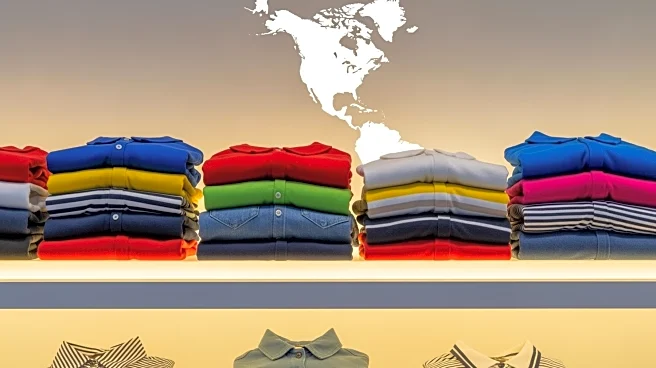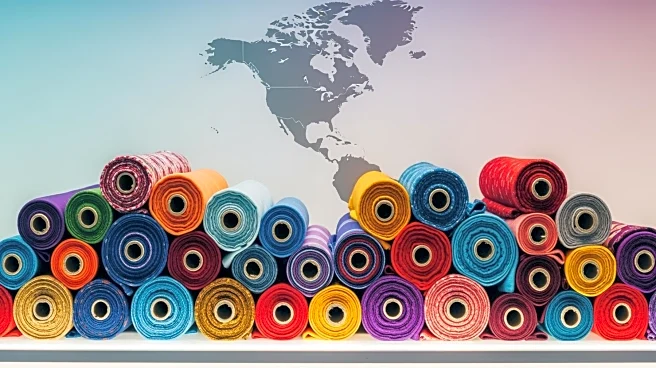What's Happening?
Indonesia's apparel exports have reached $5 billion during the January to July period, marking an increase from the previous year. This growth is attributed to improved consumer sentiment in the United
States, restocking activities among major retailers, and a gradual rebound in fashion retail spending. North America has emerged as the key destination for these exports, accounting for $3.5 billion or 70% of the total exports. The Asia-Pacific region follows with $1.2 billion, and Europe with $300 million. Despite the success in these regions, shipments to the Middle East, Africa, and Central and South America remain relatively small due to high logistics costs and limited trade agreements.
Why It's Important?
The significant growth in Indonesia's apparel exports to North America highlights the region's strong demand for fashion products and the potential for further economic ties between Indonesia and the U.S. This development is crucial for Indonesia's economy, as it diversifies its export base and strengthens its position in the global apparel market. The reliance on North America also underscores the importance of maintaining favorable trade relations and addressing logistical challenges to expand into other regions. For U.S. retailers, the increased imports from Indonesia may offer competitive pricing and a wider variety of products, benefiting consumers and businesses alike.
What's Next?
Indonesia may seek to negotiate more favorable trade agreements with regions where exports are currently limited, such as the Middle East and Africa, to further expand its market reach. Additionally, efforts to reduce logistics costs could enhance competitiveness and facilitate growth in these areas. U.S. retailers might continue to capitalize on the availability of Indonesian apparel, potentially leading to increased collaboration and investment opportunities between the two countries.
Beyond the Headlines
The growth in apparel exports from Indonesia could have broader implications for the global fashion industry, potentially influencing trends and consumer preferences. As Indonesia strengthens its export capabilities, it may also invest in sustainable practices and innovation to meet international standards and consumer demands for ethical fashion.













